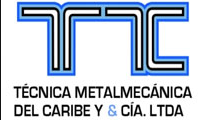New Clinical Studies show Improved Melanoma Detection by US clinicians with Nevisense
STOCKHOLM, Sept. 16, 2020 /PRNewswire/ -- SciBase Holding AB ("SciBase") (STO:SCIB), a leading developer of augmented intelligence-based solutions for skin disorders, announced today that both the Journal of the American Academy of Dermatology (JAAD) and SKIN, The Journal of Cutaneous Medicine (SKIN), have published studies assessing the clinical impact of Nevisense. The studies compared the results of US clinicians evaluating atypical pigmented skin lesions (atypical moles) using visual evaluation only compared to visual evaluation and the Nevisense result combined.
The JAAD publication titled "Impact of Electrical Impedance Spectroscopy on Dermatologists' Number-Needed-to-Biopsy Metric and Biopsy Decisions for Pigmented Skin Lesions" sought to evaluate improvements in clinical accuracy in melanoma detection, while the SKIN publication titled "Integrating Electrical Impedance Spectroscopy into Clinical Decisions for Pigmented Skin Lesions Improves Diagnostic Accuracy: A Multitiered Study" sought to evaluate the differences between practicing dermatologists, physician's assistants, nurses and residents. All clinician types (dermatologists, physician's assistants, nurses and residents) improved by similar amounts, and the clinicians with the lowest number of correct evaluations improved the most. The publications are based on clinical evaluations of lesions in reader studies. The JAAD publication included 267 dermatologists while the SKIN publication included 591 clinicians (dermatologists, physician's assistants, nurses and residents). All clinicians evaluated lesions using visual evaluation only, and then they added the Nevisense information in over 25,000 evaluations.The key study takeaways were:
-- The number of `missed melanomas' fell from ~7% to < 1%
-- Overall sensitivity (ability to correctly identify melanoma) increased
on average across the groups by 14% and specificity (ability to
accurately identify benign moles) by 10.2%
-- In total, clinicians identified 1,343 more melanomas with Nevisense
compared to visual evaluation alone.
-- All clinician types (dermatologists, nurses and residents) improved a
similar amount, and the clinicians with the lowest number of correct
evaluations improved the most.
-- In the JAAD study, dermatologists improved their sensitivity from 84 to
98%, their specificity from 34% to 44% and their NNB (Number Needed to
Biopsy) from 6.3 to 5.3.
"Melanoma is the deadliest form of skin cancer, but when detected early, treatment has a nearly 100% cure rate making early detection critical to survival. These studies show a significant reduction of missed melanomas from ~7% to less than 1%, a further indication of the clinical value Nevisense can bring by helping clinicians identify melanomas and improve performance across the board. This is the first time this type of study has been performed and we are pleased with the results," stated Dr. Darrell S. Rigel, Clinical Professor, Ronald O. Perelman Department of Dermatology at NYU Grossman School of Medicine. "These results further demonstrate the benefits of early melanoma detection with Nevisense, and I am pleased that we are able to share our findings with the clinical community demonstrating the benefits of this technology for patients."
"Clinicians face difficult decisions every day when they evaluate moles, so it was very positive to see that Nevisense could so significantly improve their accuracy. Nevisense was able to help clinicians of all levels of experience, and especially those who were most in need of support," said Simon Grant, CEO of SciBase. "Dr. Rigel's studies confirmed what we see from our users in the field - significant clinical benefit for both clinicians and patients. This is further proof of the potential for Nevisense to improve the standard of care of melanoma detection in the United States and will provide timely support to our ongoing reimbursement process."
For more information please contact:
Simon Grant, CEO SciBase
Tel: +46 72 887 43 99
Email: simon.grant@scibase.com
Certified Advisor (CA):
Avanza
Tel: +46 8 409 421 20
Email: ca@avanza.se
About SciBase and Nevisense
SciBase AB is a Swedish medical technology company, headquartered in Stockholm that has developed and sells a unique point-of-care device for evaluation of skin disorders such as skin cancer and atopic dermatitis. Its first product, Nevisense, helps doctors to detect malignant melanoma, the most dangerous type of skin cancer. Further development has led to Nevisense also being used as a tool to assess the skin barrier and inflammation. SciBase was founded by Stig Ollmar, Associate Professor at The Karolinska Institute in Stockholm, Sweden. Nevisense is based on substantial research and has achieved excellent results in the largest clinical study ever conducted on the detection of malignant melanoma. Nevisense is CE marked in Europe, has TGA approval in Australia and an FDA approval (PMA) in the United States. Nevisense is based on a method called Electrical Impedance Spectroscopy (EIS), which uses the varying electrical properties of human tissue to categorize cellular structures and thereby detect malignancies and abnormalities. SciBase is listed on First North Growth Market ("SCIB"). Further information is available at www.scibase.com.
This information was brought to you by Cision http://news.cision.com
The following files are available for download:
https://mb.cision.com/Main/12371/3194683/1306674.pdf
Release
View original content:http://www.prnewswire.com/news-releases/new-clinical-studies-show-improved-melanoma-detection-by-us-clinicians-with-nevisense-301131974.html
SOURCE SciBase




